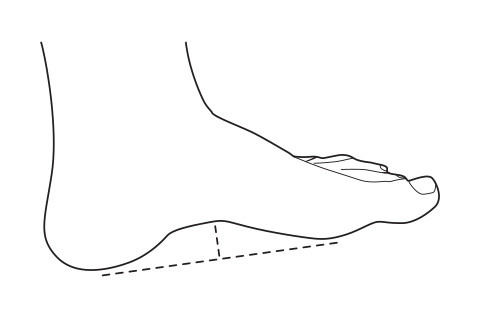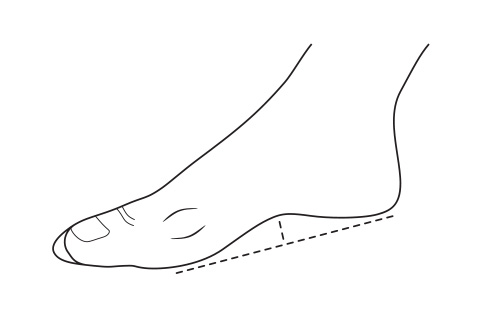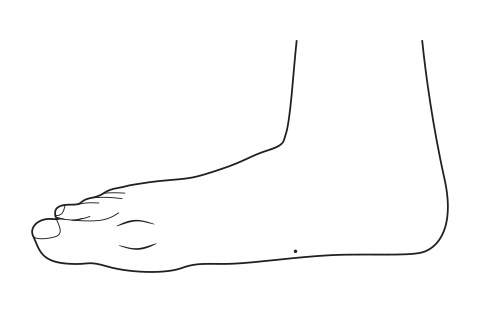Weight bearing & non-weight bearing arch height tests
Overview
All the bones in the foot move during the gait cycle. In an ideal foot, this choreographed movement changes the foot from a rigid lever to a mobile adapter and back again depending on where the foot is in the gait cycle (see section 2.3).
For the foot to function normally, the connective tissues between the bones must be resilient. That is, they must be able to provide enough support for the bones to move apart far enough so the foot may behave as a mobile adapter, then close enough for the foot to act as a rigid lever when force is applied. Therefore, the integrity of the connective tissue is important for optimal force transfer through the foot during the walking cycle.
The purpose of this test is to assess the integrity of the foot by evaluating the net change in the arch height from when the foot is non-weight bearing to when it is weight bearing.
Measurements can be purely observational or quantified by using a flat piece of material as a measuring device.

Arch height indicator
| Categories | Unit |
| Flat | 0–10mm (flat feet) |
| Low | 11–18mm |
| Medium | 19–26mm |
| High | 27–32mm |
| Very High | 33–40mm |
To perform the test
- Ask the customer to sit with the foot suspended in the air. Imagine there is a line running between the ball and the heel of the foot. Estimate the height of the arch (at its highest point) above this line. Now look at the table to determine the correct category. In the relevant field on the Move Without Pain website, select either Flat, Low, Medium, High or Very High. Repeat for the other foot.
- Ask the customer to stand up with both feet flat on the ground. Estimate the height of the arch. Now look at the table to determine the correct category. In the relevant field on the Move Without Pain website, select either Very Low, Low, Medium, High or Very High. Repeat for the other foot. Note: you must have two measurements for each foot.
Did you know?
It is possible for the foot to appear normal in non weight bearing position, yet, when it takes weight, the arch can disappear (as shown in the diagrams).

Non-weight bearing

Weight bearing (the dot represents previous arch apex position)